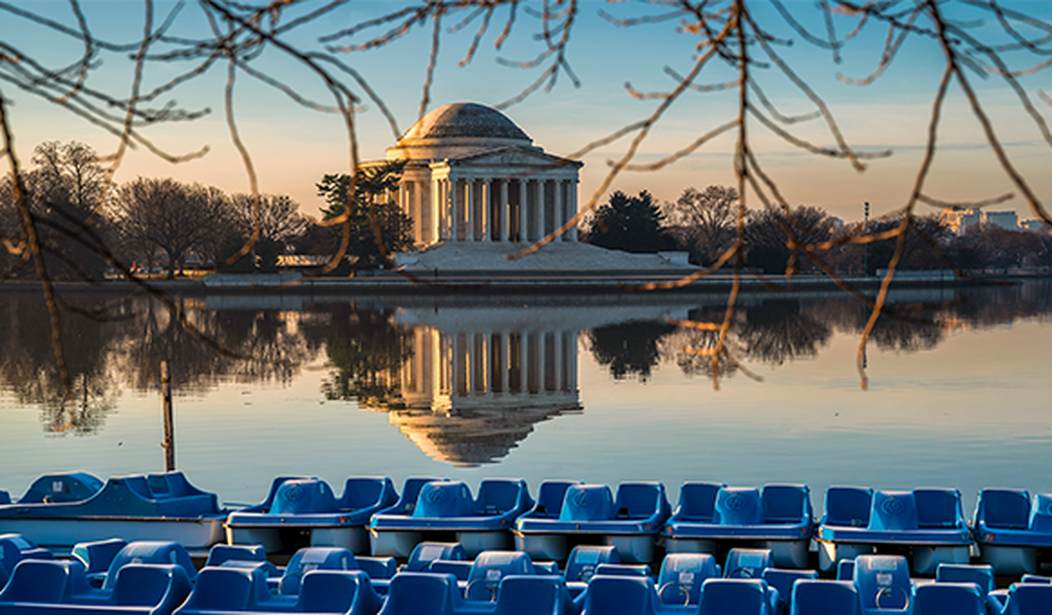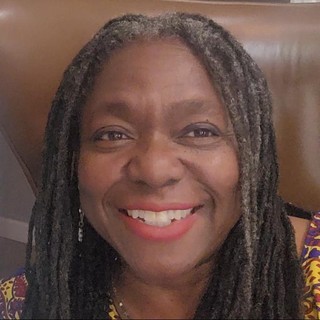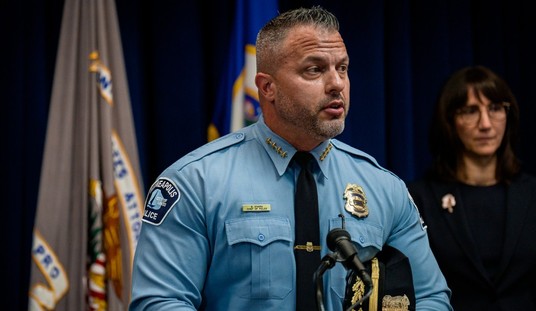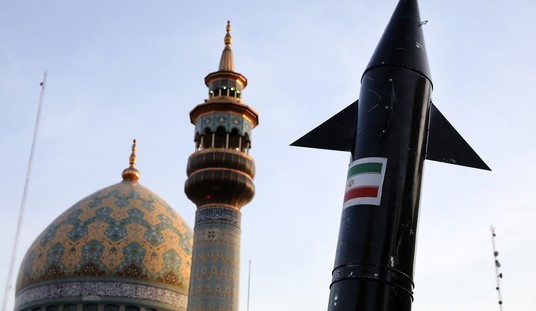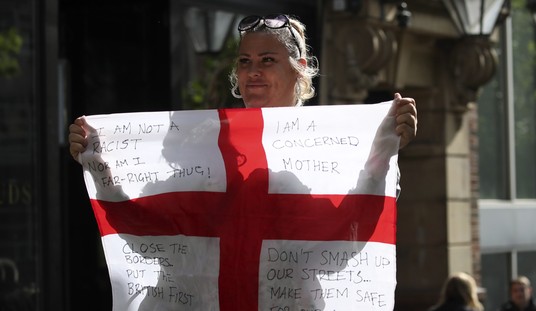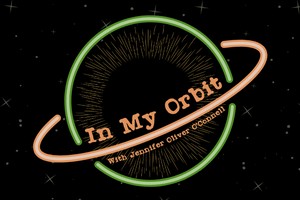
Two very consequential events happened last week involving symbolic representations of history. One involved a statue being removed from public display, the other involved a bust being erected for public display.
Thomas Jefferson was a brilliant statesman whose eloquent words perfectly encapsulate America’s high ideals. He deserves America’s everlasting gratitude & praise, yet America-hating Socialist Democrats on the NYC Council think he should be cancelled. https://t.co/zoh0ICH75R
— Mo Brooks (@RepMoBrooks) October 26, 2021
From Fox News:
The New York City Public Design Commission voted unanimously to remove a statue of Thomas Jefferson, the author of the Declaration of Independence and the third president of the United States, from the New York City Council’s chambers at City Hall.
The commission debated a plan to loan the 187-year-old statue, which has resided inside City Hall since 1833, to the New York Historical Society in order “to protect the artwork and provide opportunities to exhibit it within an educational and historical context.” Yet Commission President Signe Nielsen opposed the plan because the society is a private institution that charges a $22 entrance fee. The statue’s future remains uncertain.
A unanimous vote was made to remove one of the Founding Fathers of our country from the public square. Thomas Jefferson is responsible for articulating the very foundation of our freedoms and liberty, but in New York City, he is relegated to the shadows.
It’s utter nonsense. More on the why to come.
Even Jefferson needs to be relegated to a museum. Like Lee, he was appreciated outside of VA, and now even in VA can be dishonored. What does Hofstra stand for if not Independence? #cancelculture #monument #twitterstorianshttps://t.co/W00FwvHREq
— Jefferson Davis (@Jeff_Davis1808) October 28, 2021
Meanwhile, in Oakland, California…
A bronze sculpture of Black Panther Party co-founder Huey P. Newton, created by Dana King, is unveiled today by Fredrika Newton at Dr. Huey P. Newton Way and Mandela Parkway in Oakland. It is the first permanent public art honoring the Black Panther Party in Oakland. @KQEDnews pic.twitter.com/YGTZVJMA5d
— Beth LaBerge (@bethlaberge) October 25, 2021
From the Associated Press:
At the California foundry that fired a bust of Black Panther Party co-founder Huey Percy Newton, his surviving spouse supervised as a bronze caster put finishing touches on what is now the first permanent public art piece honoring the party in the city of its founding.
“It just glowed, like he did,” Fredrika Newton said. “His skin just glistened.”
The unveiling took place Sunday at Dr. Huey P. Newton Way and Mandela Parkway, near the spot where Newton was murdered in 1989. It came as Panther alumni, descendants and others gathered to mark the 55th anniversary of a party that has long been both celebrated and vilified.
‘I would like for people to see him as a total human being … he wasn’t just an iconic figure in a wicker chair. This was a man with vulnerabilities, with feelings, with insecurities, with frailties, just like anybody.’ Said Fredrika Newton, founder of the Dr. Huey P. Newton Foundation
Just like anybody… Hmm….
The Los Angeles Times covered Newton’s murder in 1989, and had this quote from then-Alameda County District Attorney Tom Orloff:
Alameda County Chief Assistant Dist. Atty. Tom Orloff told a reporter, “the Huey Newton I dealt with from the mid-1970s on played no positive role in the community in any sense; I saw him as a criminal.”
(Newton’s encounters with the law and courts began in 1964 when he was convicted of felony assault with a knife. Thereafter, his record included a conviction of murdering an Oakland police officer in 1967, but the conviction was eventually overturned. He was accused of the 1974 murder of the prostitute, a case that ended in a hung jury. Another 1974 charge involving the pistol-whipping of a tailor was dropped. In 1982, he was accused of embezzling $600,000 from a Panther-run elementary school; he pleaded guilty earlier this year to stealing $15,000 of state aid to the school and was sentenced to six months in jail. Several weapons charges over the years resulted in three convictions for which he served varying amounts of jail time.)
Thomas Jefferson was a slave owner who, according to the Smithsonian, willingly used his slaves for profit, treated them poorly, and bedded his slave Sally Hemmings and sired many children through her.
How does one reconcile the architect of the new nation and writer of intelligent, structured and sweeping prose, with a cruel slaver?
How does one reconcile the architect of an explosive movement that focused on Black empowerment, and a champion of equal rights for women and gays, with a murderer and sociopath?
Newton remains a divisive figure. Many people still dismiss him as the leader of a band of beret-wearing, gun-toting hustlers — and no doubt would deplore the prospect of an American city memorializing him with a statue. Others say his failings were a drag on the Black Power movement.
Still, many love him to this day, venerating him as a man who, with Bobby Seale, sought to unite all Black, impoverished and oppressed people against America’s racist, capitalistic and unjust interests. His influence on the Black Lives Matter movement is undeniable.
In the L.A. Times piece, former Black Panther David Hilliard, and Rev. Cecil Williams condemned Asst. D.A. Orloff’s comments above, claiming they were said to inflame the Black community. Hilliard said he hopes Newton would inspire young people to “investigate what Newton stood for” and take up the cause of social activism.
So, Hilliard wanted Newton to be viewed with a more nuanced lens and shown grace in his death. Where is this same grace for Thomas Jefferson and his failings?
Having studied both men, I can say that Thomas Jefferson holds the power, the inspiration, and the intellectual gravitas that created lasting change. Other nations fighting for their freedom have used our Declaration, Constitution, and Jefferson’s other writings as templates for their own founding documents. Jefferson encapsulated the American ideal, and defined why freedom and liberty is essential, and why we must continue to fight for it.
Newton was articulate, prolific, and embodied some ideas that were revolutionary and pivotal in sparking a different perspective for the Black community: armed self-defense, and the community caring for their own being two of them. But has what Newton created in the Black Panther Party built a bedrock foundation of freedom, liberty, and weight? I say, “No.” Anger, militancy, and in-your-face activism only take you so far. When your vision for the community does not go beyond the community and give lessons on how to successfully embrace and navigate the larger community, you end up stuck in the perpetual cycle of “us vs. them.”
The revolutionary words, thoughts, and deeds of Thomas Jefferson built toward a greater vision and a greater good. Abolitionist Frederick Douglass, and the Rev. Dr. Martin Luther King, Jr. artfully exemplified how much our founding documents created the foundation for our freedoms and the basis on which civil rights were fought. Newton and The Black Panther Party threw out the baby with the bath water in rejecting King’s Civil Rights model, rather than building upon it.
In terms of the statues, it wearies me how many are cherry-picking history. It is destructive on its face, and will come not come to any good, or any deeper understanding of our country or each other. America should be a place where a statue of Thomas Jefferson causes no more controversy than a bust of Huey Newton—in any generation. If we truly wish to educate the public and have a conversation on our founding, and race relations in America, space should be made for both representations, both men’s stories.
But if you force me to choose, I find a statue of Thomas Jefferson more inspiring and educational than a bust of Huey Newton.

